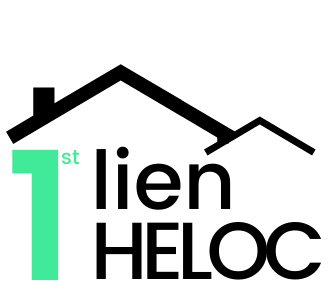The Math Behind Why You Should Use A 1st Lien HELOC to Consolidate Debt
Updated as of January 26, 2024 | FirstLienHELOC.com
Debt Consolidation 101:
If you’re currently engaged in consumer debt, whether an auto loan, credit card, or appliance financing, you might be paying a money on interest calculated at a higher interest rate than what you would get with a 1st Lien HELOC.
If your credit card calculates interest at 17% annually, and you maintain an average daily balance of more than $1000, you would pay $170 throughout the course of the year in interest. But with a 1st Lien HELOC at 6.8%, that same debt would only cost you $68, or less than half.
There are many other situations where these same rules apply. So why would you want to consolidate debt? To save money of course.
Why consolidate from a lower interest rate loan to a 1st Lien HELOC?
If you use the Velocity Banking you could consolidate your debt to just your 1st Lien HELOC, and use your net income to rapidly pay down your principal balance. This would reduce the term of your loan, and ultimately, the amount of interest you would pay.
Here is a side-by-side example:
Situation A:
Traditional Mortgage at around 6.75% APR. $200,000 balance. Assuming a monthly payment of approximately $1,300 per month reflective of a 30-year term under these conditions, the borrower continues with the conventional repayment strategy, having a total interest paid over the life of the loan approximately amounting to $266,990.63. The focus here is on consistency and predictability, with payments calculated to amortize the loan over the standard term, addressing both principal and interest components.
Situation B:
Consolidated to a 1st Lien HELOC at around 7.26% APR, $200,000 balance. By adopting the Velocity Banking strategy and paying down the balance by an average of approximately $2,289 per month, the borrower aggressively pays down the debt, leveraging a higher monthly payment to reduce the principal more rapidly. (This assumes take-home pay of $8,000 and a total monthly expense of $5,000 not including the mortgage payment) It would relatively take around 104 months (8 years, 8 months) to pay off the loan, and the total interest paid would roughly be around $75,120 over the life of the loan. This approach involves allocating all of the borrower’s net income towards the loan repayment, beyond the standard monthly payment expected in Situation A.
In this scenario, the utilization of a 1st Lien HELOC allows for a more dynamic management of debt, where surplus income is automatically applied to reduce the principal balance. This strategy benefits from the slightly higher interest rate of the HELOC compared to the traditional mortgage and is designed to accelerate debt reduction, thereby saving on interest payments over the term of the loan.
Key Considerations:
Interest Rate Comparison: The proximity of the interest rates (6.75% for the traditional mortgage vs. 7.26% for the HELOC) suggests that the primary advantage of consolidation and acceleration lies not in the rate difference but in the aggressive repayment strategy and the flexibility offered by the HELOC’s repayment structure.
Financial Discipline: Success in Situation B requires a disciplined approach to budgeting and cash flow management, as it involves directing a larger portion of income toward debt repayment.
Cash Flow Management: The HELOC’s sweep account feature simplifies cash flow management by automatically applying any surplus income to the loan balance, potentially reducing the need for meticulous budgeting and allowing for a more straightforward approach to accelerating debt payoff.
Total Interest Paid: The essence of the Velocity Banking strategy in Situation B is to significantly reduce the total interest paid over the life of the loan by shortening the loan term through larger and more frequent principal payments.
These calculations illustrate the impact of employing the Velocity Banking strategy with a First Lien HELOC, even at a slightly higher interest rate. Despite the higher APR in Situation B, the aggressive repayment strategy significantly reduces the loan term and the total interest paid. This is facilitated by the sweep account feature of the HELOC, which applies any remaining income automatically against the principal balance, simplifying cash flow management and enhancing the efficiency of debt reduction.
This comparison demonstrates the potential benefits of consolidating higher interest rate debts into a First Lien HELOC and aggressively paying down the balance using the Velocity Banking strategy. It’s important to note that while this strategy can lead to substantial savings in interest and a quicker payoff period, it requires a higher monthly payment and a disciplined approach to managing finances. This analysis underscores the importance of carefully considering loan terms, interest rates, and repayment strategies in personal financial planning.
Achieve Financial Freedom
Sign up on FirstLienHeloc.com to get connected with a licensed lender who can deliver an all-in-one 1st Lien HELOC. They’ll walk you through the application process and help outline your budget, your numbers, and exactly how much you can save by replacing your mortgage.

